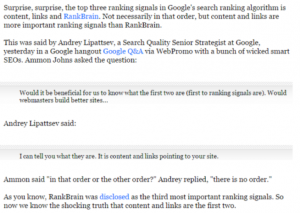“You’ve got to play to win.” “With great risk, comes great reward.” Both of those popular phrases address the same concept – that in order for a company to grow, the leaders must be invested in every aspect of the business and willing to embrace technology, communication, and social changes.
That idea is especially important for enterprise CEOs. And while past research has documented social media hesitation and lack of adoption on the part of CEOs, a recent Harvard Business Review (HBR) article points to a new trend, one that shows CEO “sociability” has more than doubled since the 36 percent rates of 2010. And in fact, where having a social presence was once considered too risky for fear of missteps and negative backlash, today’s CEOs are recognizing that having a well-defined and consistent digital strategy is mandatory to interact with today’s customers and prospects.
The CEO is the face of the company now more than ever before. Social media gives CEOs a platform to present key messages, company values, and take risks to attract new audiences. The CEO now has a direct voice and can share sneak peeks, daily snapshots, and yes, personality.
In looking at some of the most popular social outlets, Facebook, LinkedIn, and Twitter all provide established platforms for companies to share perspectives, insight, or other content from executives to help companies appeal to their audiences. Moreover, social analysis and monitoring of those platforms can give executives an understanding of their customers far beyond the basic demographic information. They also have the power to draw direct correlations between consumers and their interests, sentiments, and feelings. For CEOs, this is an opportunity to develop a more comprehensive understanding of a key demographic. The benefits will be felt throughout the company in the form of better direction in new product development (based on an understanding of the customers’ pain points and wishes), better sales prospect targeting (based in knowing where the largest populations of users are tweeting from), and better competitive differentiation (based on following competitive news in real time).
It is also important to recognize that a socially active CEO has an important internal effect. HBR asserts that social CEOs inspire other company executives to feel inspired, proud, and accessible. And that accessibility is key to attracting the most talented and innovative employee base.
CEOs that take an active role in social media have an advantage when it’s time to identify the right people to manage particular social campaigns. That is because through their social data, they have the insights needed to identify the voice and the employee best suited for each role. Those that consistently use social media to learn more about a target audience will understand the kind of people they need for their brand’s social efforts.
Social media doesn’t exist in the vacuum. Ultimately, it is an extension of an overall marketing and branding strategy. Brands needs to understand that and treat the data and sentiments shared through different channels as opportunities to improve presence, reach, and sales. Executives have an especially important role to play because of the direct association they have with their brands. Even the best social campaign manager can’t influence a brand’s image the way some strategic comments and statements from an executive can. Brands that fail to make their executives and other employees a part of their social campaigns are missing a major opportunity.
Xconomy
(142)








